4.1 Simple phenomena of magnetism
1. Forces Between Magnetic Poles
Key Terms:
- N Pole (North Pole) and S Pole (South Pole): Opposite poles of a magnet.
- Attraction: Occurs between opposite poles (N-S).
- Repulsion: Occurs between like poles (N-N or S-S).

- Attraction

- Repulsion
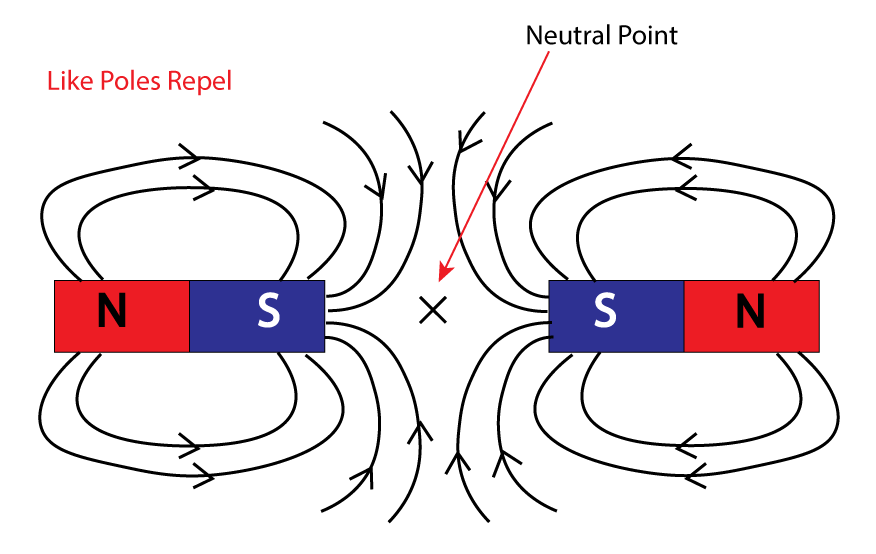
Magnets can attract or repel other objects and this happens because of it’s two poles- north pole and south pole. When two magnets are bought together and if they have opposite poles facing each other, then they will attract each other. If they’re the same poles, they will repel each other. Thus, unlike poles attract and like poles repel.
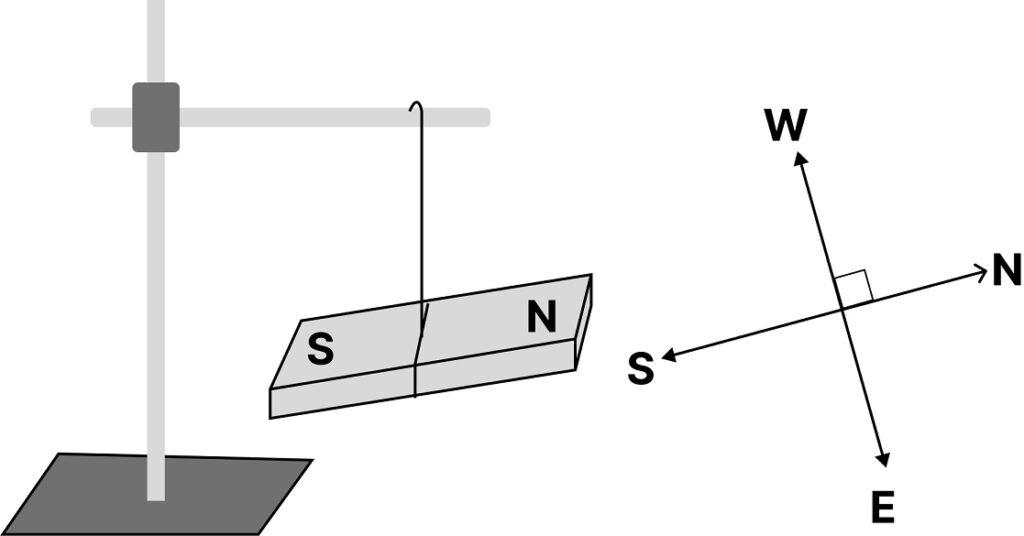
A compass needle, a bar magnet, aligns itself north-south when free to rotate. Its north pole points roughly towards Earth’s geographic North Pole, while the south pole points in the opposite direction.
Magnetized vs. Unmagnetized Materials:
- Magnetized materials are those that exhibit magnetic properties.
- Unmagnetized materials show no magnetic properties until influenced by an external magnetic field.
2. Induced Magnetism
- Induced magnetism occurs when a magnetic material becomes temporarily magnetized in the presence of a magnetic field.
- When the field is removed, the material may lose its magnetism if it is a temporary magnet.
Magnetised: when a magnetic material has been made magnetic
Unmagnetised: when a magnetic material has not been made magnetic
When a piece of unmagnetised magnetic material (E.g: Iron) touches or is brought near to the pole of a permanent magnet, it turns into a magnet itself. The magnetism is produced (induced).
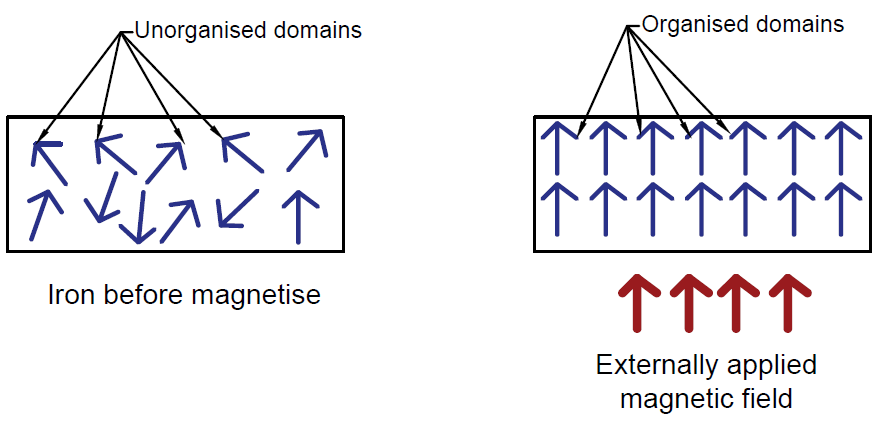
3. Temporary and Permanent Magnets
- Temporary Magnets (e.g., Soft Iron):
- Easy to magnetize and demagnetize.
- Used in applications where magnetism needs to be turned on and off, like in electromagnets.
- Permanent Magnets (e.g., Steel):
- Retain their magnetism for long periods.
- Commonly used in tools and devices needing a constant magnetic field.
| Type of magnetic material | Description | Examples | Uses |
|---|---|---|---|
| soft | easy to magnetise, but readily loses its magnetism | soft iron | cores for electromagnets, radio aerials and transformers |
| hard | retains magnetism well, but difficult to magnetise in the first place | hard steel | permanent magnets, compass needles, fridge magnets, loudspeaker magnets |
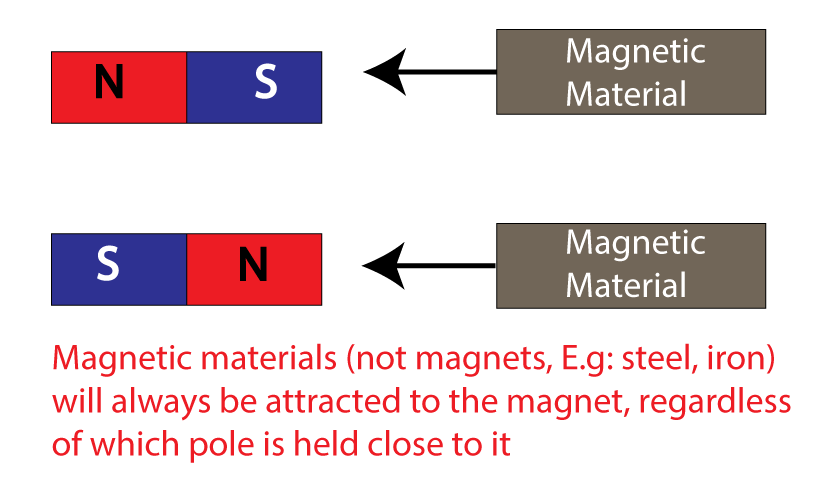
4. Magnetic and Non-Magnetic Materials
- Magnetic Materials: Such as iron, nickel, and cobalt, which can be magnetized or attracted to magnets.

- Non-Magnetic Materials: Such as wood, glass, and plastic, which are not affected by magnetic fields.
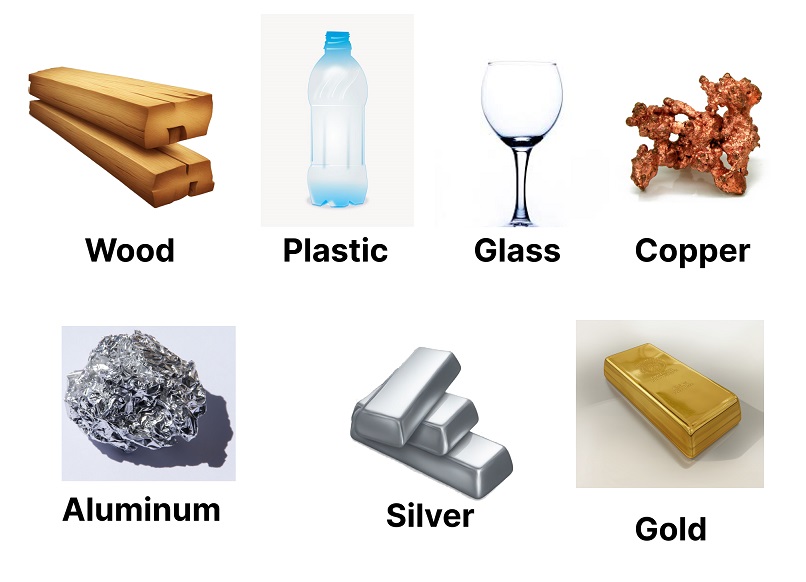
5. Magnetic Fields
- Magnetic Field Defined as a region around a magnet where a magnetic pole (N or S) experiences a force.

is shown by iron filings. The iron filings cluster most strongly around the two poles of the magnet. This is where the field is strongest.
6. Magnetic Field Lines
- Patterns and directions of magnetic field lines:
- Around a Bar Magnet: Magnetic field lines emerge from the N pole, curve around the magnet, and re-enter at the S pole.
- Direction: The direction of magnetic field lines shows the path a N pole would follow.

Two rules that Magnetic field lines obey:
- Field lines are always from north to south (indicated by an arrow)
- They never touch or cross other field lines
7. Direction of the Magnetic Field
- The direction of a magnetic field at a point is the direction of the force on the N pole of a magnet at that point
8. Plotting Magnetic Field Lines
Magnetic field can be investigated using a small compass

- Place the plotting compass near the magnet on a piece of paper
- Mark the direction the compass needle points
- Move the plotting compass to many different positions in the magnetic field, marking the needle direction each time
- Join the points to show the field lines.
The needle of a plotting compass points to the south pole of the magnet.
9. Uses of Permanent Magnets and Electromagnets
- Permanent Magnets: Used in devices that require a stable magnetic field, such as in motors, Loudspeakers, door latches and Fridge magnets.
- Electromagnets: Used where variable magnetism is needed, such as in cranes, Electric buzzers and bells and speakers, as they can be turned on and off by controlling the electric current.
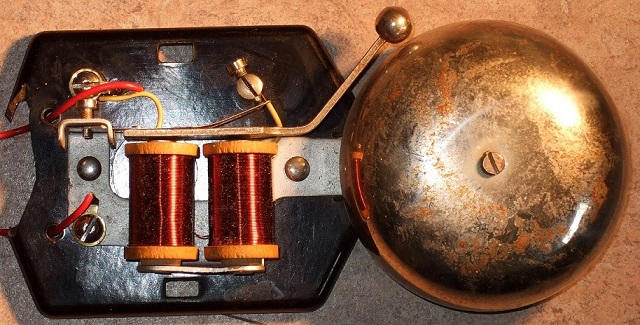
There is no way to change the strength of a permanent magnet, but there are three ways to increase the strength of an electromagnet:
- Increase the current flowing through it: the greater the current, the greater the
strength of the field. - Increase the number of turns of wire on the coil: this does not mean making the foil longer, but packing more turns into the same space to concentrate the field.
- Add a soft iron core: an iron core becomes strongly magnetised by the field, and this makes the whole magnetic field much stronger.

Supplement
10. Magnetic Forces and Magnetic Fields
- Magnetic forces arise due to interactions between magnetic fields. When two fields overlap, their interactions can cause either attraction or repulsion, depending on the field orientations.
11. Relative Strength of Magnetic Fields
- The strength of a magnetic field can be visualized by the spacing of the magnetic field lines: closer lines indicate a stronger field, while widely spaced lines indicate a weaker field.

